Effect of circulating tumor cell aggregate configuration on hemodynamic transport and wall contact
- PMID: 29024748
- PMCID: PMC6309786
- DOI: 10.1016/j.mbs.2017.10.002
Effect of circulating tumor cell aggregate configuration on hemodynamic transport and wall contact
Abstract
Selectin-mediated adhesion of circulating tumor cells (CTCs) to the endothelium is a critical step in cancer metastasis, a major factor contributing to the mortality of cancer. The formation of tethers between tumor cells and endothelial selectins initiates cell rolling, which can lead to firm adhesion, extravasation and the formation of secondary metastases. Tumor cells travel through the bloodstream as single cells, or as aggregates known as circulating tumor microemboli (CTM). CTM have increased survivability and metastatic potential relative to CTCs, and the presence of CTM is associated with worse patient prognosis. The motion of cells and cellular aggregates in flow is a function of their size and shape, and these differences influence the frequency and strength of their contact with the endothelium. In this study, a computational model consisting of the hydrodynamic component of the Multiparticle Adhesive Dynamics simulation analyzed the effects of model aggregate conformation and orientation on adhesive binding potential. Model aggregates of the Colo205 colorectal cancer cell line were created, consisting of two, three, and four cells in simple geometrical conformations. Contact time, contact area, and time integral of contact area were measured as a function of fluid shear rate, initial centroid height, and initial orientation for model aggregates that experienced hydrodynamic collisions with the plane wall. It was found that larger CTM conformations with intermediate nonsphericities had the highest adhesion potential. The results of this study shed light on the correlation between environmental conditions and extravasation efficiency, which could inform the development of new anti-metastatic drugs.
Keywords: Cancer metastasis; Circulating tumor cell; Circulating tumor microemboli; Hydrodynamic collision.
Copyright © 2017 Elsevier Inc. All rights reserved.
Figures

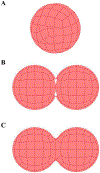
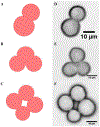
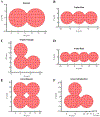





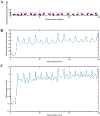
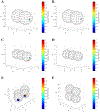
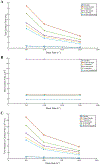



Similar articles
-
Glycomechanics of the metastatic cascade: tumor cell-endothelial cell interactions in the circulation.Ann Biomed Eng. 2012 Apr;40(4):790-805. doi: 10.1007/s10439-011-0463-6. Epub 2011 Nov 19. Ann Biomed Eng. 2012. PMID: 22101756 Review.
-
Circulating tumor microemboli: Progress in molecular understanding and enrichment technologies.Biotechnol Adv. 2018 Jul-Aug;36(4):1367-1389. doi: 10.1016/j.biotechadv.2018.05.002. Epub 2018 May 18. Biotechnol Adv. 2018. PMID: 29753882 Review.
-
The role of tumor cell adhesion as an important factor in formation of distant colorectal metastasis.Dis Colon Rectum. 2001 Jun;44(6):876-84. doi: 10.1007/BF02234713. Dis Colon Rectum. 2001. PMID: 11391152
-
Hemodynamic Forces Tune the Arrest, Adhesion, and Extravasation of Circulating Tumor Cells.Dev Cell. 2018 Apr 9;45(1):33-52.e12. doi: 10.1016/j.devcel.2018.02.015. Dev Cell. 2018. PMID: 29634935
-
Analytical cell adhesion chromatography reveals impaired persistence of metastatic cell rolling adhesion to P-selectin.J Cell Sci. 2015 Oct 15;128(20):3731-43. doi: 10.1242/jcs.166439. Epub 2015 Sep 8. J Cell Sci. 2015. PMID: 26349809 Free PMC article.
Cited by
-
Fluids and their mechanics in tumour transit: shaping metastasis.Nat Rev Cancer. 2020 Feb;20(2):107-124. doi: 10.1038/s41568-019-0221-x. Epub 2019 Nov 28. Nat Rev Cancer. 2020. PMID: 31780785 Review.
-
The Complexities of Metastasis.Cancers (Basel). 2019 Oct 16;11(10):1575. doi: 10.3390/cancers11101575. Cancers (Basel). 2019. PMID: 31623163 Free PMC article. Review.
-
Investigating the Interaction Between Circulating Tumor Cells and Local Hydrodynamics via Experiment and Simulations.Cell Mol Bioeng. 2020 Oct 21;13(5):527-540. doi: 10.1007/s12195-020-00656-7. eCollection 2020 Oct. Cell Mol Bioeng. 2020. PMID: 33184581 Free PMC article.
-
Analysis of the dielectrophoretic properties of cells using the isomotive AC electric field.Biomicrofluidics. 2018 Jul 6;12(4):044103. doi: 10.1063/1.5031054. eCollection 2018 Jul. Biomicrofluidics. 2018. PMID: 30034566 Free PMC article.
-
Game-theoretical description of the go-or-grow dichotomy in tumor development for various settings and parameter constellations.Sci Rep. 2023 Oct 5;13(1):16758. doi: 10.1038/s41598-023-43199-3. Sci Rep. 2023. PMID: 37798314 Free PMC article.
References
Publication types
MeSH terms
Grants and funding
LinkOut - more resources
Full Text Sources
Other Literature Sources

